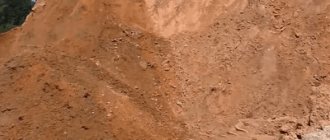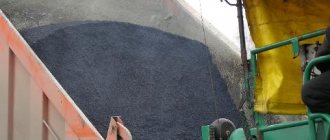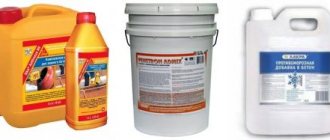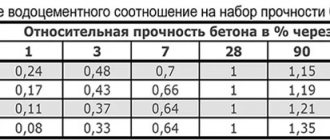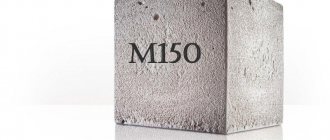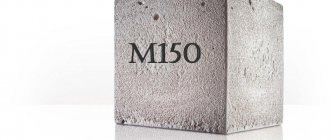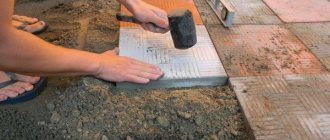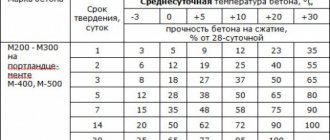We are a factory with a full cycle of metal processing - from our own laser cutting of metal to assembly production, powder coating, etc.
We manufacture the main equipment (silos, mixers, packaging, dispensers, conveyors, etc.) in our own production.
We use components for silos and feeders from the Italian company WAM, whose official representative we are. Camozzi pneumatics (Italy), control panel based on OWEN automation (at the request of Siemens - the only difference is the price).
our clients
Our clients include not only Russian, but also well-known foreign manufacturers. We successfully compete on the international market and supply plants to large enterprises in the construction industry.
- Aerostone dry mix plant (news >>)
- Contite Seal waterproofing plant (news >>)
- Dry mix plant KLESTER (news >>)
- OJSC Gazprom is a plant for the production of SSS with vermiculite, turnkey delivery. (news >>)
- HESS AAC is a manufacturer of large autoclaved aerated concrete plants. One complete plant has been delivered for installation in Libya. (watch news >>)
- The Knauf company - this well-known brand constantly purchases from us various components, complete production, and also orders the development and production of unique systems. (news 1 >> news 2 >> news 3 >>)
- Petperlite, St. Petersburg - a unique plant with petroperlite, plant 15 tons per hour (news >>, thanks for installation >>)
Standard kits
Factories are logically divided into two different designs - vertical and horizontal.
With a vertical design, silos or other storage facilities are located above the dispensers and therefore screw conveyors are not needed to transfer the components of the mixtures to the weigh dispensers. This is a plus, since screw conveyors require periodic maintenance and replacement of wear parts. The disadvantage of this arrangement is that it requires a large structure, which is not always possible.
The horizontal version can be placed in rooms with relatively low ceiling heights. The only drawback of this scheme is that it requires additional equipment for transferring materials - screws or pneumatic lines.
Below is a list of typical plant options, but each order is unique and is calculated separately.
To calculate the price, write and we will make an offer to suit your needs.
You can also .
| Name | Description |
| Vertical 1 | productivity up to 10 tons per hour |
| Vertical 2 | productivity up to 30 tons per hour, without sand drying |
| Vertical 3 | productivity up to 30 tons per hour, with sand drying |
| Horizontal 1 | productivity up to 10 tons per hour |
| Horizontal 2 | productivity up to 30 tons per hour, without sand drying |
| Horizontal 3 | productivity up to 30 tons per hour, with sand drying |
Component Selection
Connecting element
Scheme of fillers for concrete mixture.
The most expensive and significant component of cement-sand mortars is cement. The quality of the cement determines how strong the concrete structure will be. Therefore, it would be correct to choose cement with sufficiently high strength indicators. That is, when purchasing, you need to pay attention to the brand and class of cement. The brand will depend on the quality and in what proportions its components will be added to the cement-sand mixture. The grade of cement is designated by the letter M. There are known grades of cement from M50 to M800. This indicates the strength level of concrete. For pouring the foundation of a country house, which creates a relatively small load on the foundation, the best choice would be Portland cement of the M500, M400 brands.
If it is necessary to obtain concrete of a certain brand and class, then for this you should know the consumption of cement of the correctly selected brand. Table 2 shows summarized data for some common grades of concrete. Be sure to take into account the fact that the astringent properties of cement decrease during long-term storage. So, when stored for six months, the grade of cement is reduced to 40%. The consumption of such cement for preparing a cement-sand mixture will have to be increased.
Table 2. Consumption and grade of cement for preparing concrete
| Brand and class of required concrete | B10M150 | B15M200 | V20M250 | V25M350 | V30M400 |
| Cement brand | M300 | M400 | M400 | M400 | M500 |
| Cement consumption, kg/cub.m | 225 | 275 | 305 | 350 | 345 |
Characteristics of sand
Table of the ratio of cement, sand and crushed stone.
To prepare cement-sand materials, such as concrete mixture, mixture for making brickwork or plaster, it is necessary to use sand washed in running water. Washing of quarry sand is carried out in order to remove various pollutants from the sand mass. Earthy or clayey inclusions can significantly weaken the strength of concrete and, accordingly, the foundation. These inclusions reduce the binding properties of cement and increase the time it takes for the cement-sand mixture to set. The best sand option for use would be river sand. The washing process is already eliminated; the river sand fraction is ideal for construction.
Option of a standard line for the production of dry mixtures
The AAMix plant supplies lines with higher productivity and for a larger number of types of dry mixtures. Large projects are prepared individually upon request and after completing a detailed questionnaire.
The SunnyMix line allows you to produce a wide range of dry construction mixtures. The basic package includes production of:
- Plaster mixture
- Tile adhesive
- Masonry mortar
- Adhesive for aerated concrete / foam concrete
- Self-leveling mixtures
Line productivity is from 3 to 30 tons per hour.
Dosage
The putty must be diluted in accordance with the attached instructions. In them, the manufacturer indicates the required ratios of dry mixture and liquid. The solution must be applied in such a way that the resulting mass is completely consumed and does not have time to harden. After the first stirring, the putty is left to swell for a certain time. The resulting mass must be infused; water should not be added to it.
Wall putty is diluted in accordance with the proportions indicated in the instructions. Most often it is sold in containers of 25 kg. To mix 1 bag of dry matter, 10 liters of water is enough.
If the work requires applying several layers of putty, then the solution must be prepared in such a way that it hardens more slowly. Sand can be used for this operation. It must be sifted and filtered from all kinds of foreign impurities. The putty is mixed with sand in a 1:1 ratio. This proportion will provide the employee with the desired result and effect.
The mixture is most often mixed using a special nozzle. After completing this process, you need to add a kitchen spoon of PVA glue to the resulting mass. This component will give the solution softness and elasticity. The mixture will adhere better to the walls, making it easier for the plasterer to work.
After the putty and glue have infused for 15-20 minutes, the mass will need to be stirred again.
Materials
Materials used in production, for which storage and transmission mechanisms are included in the basic package (the number of materials can be increased):
- Cement
- Sand with grain sizes 0-0.6mm
- Finely ground chalk
- Ground quartz, dust fraction
- Additives – methylcellulose, starch ether, copolymer polyvinyl acetate
The percentage of component consumption per 1 ton of dry mixture produced (tile adhesive is taken as an example).
| Mixture component | Quantity kg | Quantity % |
| Portland cement without additives (M-500) | 280 | 28 |
| Finely ground chalk | 30 | 3 |
| Ground pulverized quartz fraction less than 0.08 mm | 35 | 3 |
| Quartz sand – 650 kg | 650 | 65 |
| Copolymer of vinyl acetate and ethylene - 3 kg | 3 | 0 |
| High-viscosity cellulose ether modified with starch ether | 2,2 | 0 |
From the table above it is clearly seen that the main materials consumed are cement and sand. The remaining components are consumed in small quantities. The following is the daily and monthly consumption for a productivity of 50 tons of dry mixes per day.
| Mixture component | Quantity per cube, kg | Consumption per day, with a volume of 50 tons per day, kg | Expense per month, 22 working days, tons |
| Portland cement without additives (M-500) | 280 | 14000 | 308 |
| Finely ground chalk | 30 | 1500 | 33 |
| Ground pulverized quartz fraction less than 0.08 mm | 35 | 1750 | 38,5 |
| Quartz sand – 650 kg | 650 | 32500 | 715 |
| Copolymer of vinyl acetate and ethylene - 3 kg | 3 | 150 | 3,3 |
| High-viscosity cellulose ether modified with starch ether - 2.2 kg | 2,2 | 110 | 2,42 |
We find that with this production, 32.5 tons of sand and 14 tons of cement per day are consumed per day, other components are consumed in small quantities.
When planning and designing a plant, it is necessary to take into account in advance all the options for the dry mixtures produced in order to plan in advance the necessary bunkers and silos for storing components, the necessary parts of the weighing system, setting up the production program, etc.
All this is carried out by specialists from the AAMix plant. When supplying and producing a line of dry building mixtures, we take responsibility from the design stage to the stage of installation, launch, and production of the first batches of products.
AAMix plant - confidence in support!
How to make a blind area at home?
A concrete blind area is a strong, durable and, at the same time, inexpensive solution for protecting the foundation of a house from surface moisture. It is quite possible to build a concrete blind area around the house on your own. A blind area is one of the most effective ways to drain surface water from the foundation of a building. The blind area will reliably perform the functions of protecting the building’s foundation from external influences of water for many years.
Types of concrete mixtures for the construction of blind areas.
To construct a blind area, it is recommended to use a concrete mixture of a grade not lower than B20 (M250).
A good choice for constructing a concrete blind area would be ready-mixed concrete (https://holcimbeton.ru/), manufactured at a reliable plant. The use of a ready-made mixture significantly reduces the time it takes to construct a blind area; moreover, a factory-made concrete mixture is much more reliable than preparing a concrete mixture yourself, even if a concrete mixer is used.
The best option for constructing a blind area is M300 sand concrete, to which only crushed stone will need to be added. A ready-made dry mix from a reliable manufacturer greatly simplifies the process of preparing the mortar: the exact weight and correct proportions of cement and sand, recommendations for preparing the mortar on the packaging will help you correctly calculate the amount of dry mix for construction work, no need to add cement or other expensive additives. Strengthening of concrete in just 12 hours.
Functionality of a concrete blind area.
The blind area is a waterproof concrete structure along the entire outer perimeter of the building. To effectively protect the foundation from surface water, the blind area has a slope from the building wall towards the adjacent area or the drainage system. The construction of a concrete blind area involves a tight but movable connection to the base of the building, which ensures its integrity during seasonal soil heaving.
In addition to the function of a horizontal water barrier, the blind area reduces freezing of the soil around the building, which reduces heat loss. The protective device also gives the building an aesthetically complete appearance and can be used as a pedestrian path.
Basic rules for constructing a blind area.
When constructing a blind area, you should follow several rules:
- The blind area must be wider than the eaves of the building and protrude beyond its edge by a distance of at least 30 centimeters. This will protect the foundation of the house from being washed away by water flowing from the roof during rain or melting snow.
- According to building codes and regulations, the width of the blind area on clay soils must be at least 100 centimeters, and on sandy soils at least 70 centimeters. If the blind area is also used as a path, the width can be increased to 130-150 centimeters comfortable for movement.
- The slope of the blind area must be at least 1% and no more than 10%. For a blind area made of concrete, the slope from the wall is usually 3-5%.
Preparing a solution for a blind area.
To prepare the concrete mixture you will need:
- sand concrete M300,
- water
- crushed stone of fractions 5-10 or 5-20 millimeters.
- You need to add 25-30 kg of crushed stone per bag.
Construction of a concrete blind area.
The technology and sequence of constructing a concrete blind area consists of the following stages:
- Preparing the trench. The area allocated for the blind area is marked with stakes and rope. The level at which the blind area adjoins the plinth is marked with beacons in increments of 1.5-2 meters. Then a flat trench of the required width and depth of 20 to 30 centimeters is dug around the base of the building, after which the soil in the trench is compacted. It is advisable to use a vibrating plate for compaction.
- Waterproofing layer. Roofing felt is used as a material for the waterproofing layer. The roofing material is laid in two layers, so that one edge is wrapped onto the wall, thus creating an expansion joint. At the joints, the waterproofing material is overlapped.
- Filling the sand base. The leveling layer of sand is wetted and thoroughly compacted, creating the necessary slope. The thickness of the sand base is 5-10 centimeters. At this stage it is also advisable to use a vibrating plate. Important. In regions with harsh climates, concrete pavements are often insulated. An insulated blind area reduces heat loss from the building. If an insulated blind area is included in the project, this can reduce the estimated freezing depth and reduce the cost of building a foundation.
- Installation of formwork. Formwork is assembled from wooden boards. The formwork should be well fixed by installing spacers to avoid breakthrough of the concrete mixture. Leaked concrete mixture containing soil and construction debris is unsuitable for construction work.
- Installation of expansion joints.
The formwork construction technology assumes the presence of transverse expansion joints located at a distance of 2-2.5 meters from each other. At the corners of the building, expansion joints are laid diagonally. The material used is boards placed on edge. Boards for expansion joints are pre-impregnated with waste oil and covered with bitumen. Important. Expansion joints soften the impact of daily and seasonal temperature changes, protecting the concrete blind area from the formation of cracks, increasing its service life. Instead of wooden boards placed on edge, you can use a special plastic bentonite-rubber or vinyl tape. - Backfilling of a shock-absorbing layer. Crushed stone, covered in an even layer, is used as a shock-absorbing layer. The crushed stone is carefully compacted and leveled. The thickness of the crushed stone layer is 10 centimeters. When compacting crushed stone, it is advisable to use a vibrating plate.
- Reinforcement. To reinforce the blind area, a metal mesh with cell sizes of at least 50 by 50 millimeters is used. It is permissible to link the reinforcing mesh with the reinforcement mounted in the base of the building. When installing reinforcement in the base, holes of the required diameter are drilled at a distance of 70-80 centimeters from each other along the entire length of the blind area, after which reinforcement of the required length is driven into the holes. The reinforcement grid is attached to the reinforcement using metal wire. On heaving soils, the blind area is not connected to the base of the house.
- Laying the concrete mixture. The concrete mixture is placed in sections of formwork up to the level of its upper edge. There should be no voids in the concrete that negatively affect the strength and durability of the blind area. The thickness of the concrete slab layer must be at least 10 cm. For ease of laying the concrete mixture, it is necessary to ensure maximum access to the formwork.
- Leveling and drying. After laying, the surface of the concrete blind area is carefully leveled, and the slope angle is checked. The resistance to erosion of concrete is increased by ironing - for this, 1.5-2 hours after laying the concrete mixture, the surface is covered with a layer of dry cement and thoroughly rubbed. After ironing, the surface of the blind area is covered with film. After 14 days, the blind area is ready.
The blind area needs to be covered from precipitation so that the mixture does not collect excess moisture.
Maintenance of concrete blind area.
The blind area requires care during the concrete hardening process: the width and density of wall expansion joints and expansion joints filled with waterproofing should be checked, and, if necessary, repaired.
To increase the tightness, the surface of the blind area can be treated with a water repellent, a solution of cement and liquid glass, as well as a deep penetration primer.
To drain precipitation around the blind area, you can create a storm sewer and drainage system that will effectively drain water from the foundation of the building
Competitive advantages of the line
- High degree of automation using OWEN, Siemens controllers.
- The finished mixture can be either packaged in bags or delivered directly to a cement truck.
- Various options for receiving and issuing materials are possible.
- All silo components and augers are manufactured by WAM, Italy and supplied directly, which guarantees low prices.
Circulation of materials in the SB-6000 line:
- Cement is stored in cement silos (from 20 to 120 cubic meters), supplied to the silos from a cement truck (it is possible to supply silos with a larger volume and receive cement from hopper cars). From the silos, cement is supplied for dosing by augers.
- The remaining components are stored in 10 cubic meter silos, which is enough for approximately 8 days of operation
- Sand can be received and stored in several ways:
- taken from dump trucks to the floor, then fed by a front loader into the sand bunker
- accepted from dump trucks into the receiving hopper, no front loader is needed, but you need to make a large installation pit for the hopper, which can be more expensive than a loader. A loader in production is always useful not only for sand, but also for other needs.
Overview of different types
1. Lightweight concrete.
Grades below M200 are considered light. They are used only for preparatory work. For example, a foundation cushion is poured from M100, a thin layer under a blind area or a monolithic slab. Lightweight concrete is actively used in road construction. The finished mixture contains a very small amount of cement (167 kg per 1 m³). This is barely enough to bind the aggregate. Standard composition proportions C:P:SH=1:4.6:7.
Concrete mixture M100 has low frost resistance (50 cycles) and water resistance (W2). Low demands are also placed on aggregates. In addition, no additives are used in the production of “lean” concrete.
2. M200.
One of the most common types. Its frost resistance (100 cycles) and water resistance characteristics make it possible to use concrete in a wide variety of construction processes. Additives and plasticizers can also improve the quality composition of the material.
Heavy concrete mixture M200 is suitable for constructing strip foundations under one- and two-story buildings, pouring blind areas, floors, screeds, and floor slabs. For industrial purposes, the brand is used in the production of reinforced concrete lintels, fence slabs, rings, and fences.
For 1 m³ you will need almost 10 bags weighing 25 kg each, or more precisely 241 kg. The basic proportions of concrete components are determined as follows: C:P:SH=1:2.8:4.8. The ratios of ingredients are calculated based on cement grade M400. When measuring in buckets, achieving such accuracy is quite difficult.
3. M250.
It is produced in the same ratio as M200, but due to additives it has higher parameters of frost resistance, water resistance, and ductility. The quality indicators of the material with the same number of main components can be improved by changing the type of filler. The best option would be granite crushed stone.
The scope of application of M250 is similar to the M200 brand:
- building;
- arrangement of foundations, grillages;
- pouring floor slabs and floors.
4. M300.
The second most popular type after M200. It is used to create critical structures, roads, and pour staircases. Indispensable in the production of durable paving slabs. The ratio of components is calculated as 1:1.2:2.7. For 1 m³, 320 kg of M400 cement is required.
5. M350.
The composition of the concrete mixture per 1m³ of concrete is determined from the proportions: C:P:Shch=1:1.5:3.1 (M400 cement) or C:P:Shch=1:1.9:3.6 (M500 cement). The material is used for pouring airfield slabs, construction of large facilities, and production of reinforced concrete products. It is practically not used for household purposes.
6. Concrete M400.
The composition and proportions of concrete are usually taken as follows: C:P:SH = 1:1.1:2.5. Suitable for particularly durable floors (production workshops, basements, workshops, garages), as well as for foundations. In the case of individual construction (concreting), the correct ratio of components is easy to achieve. The "bucket" measurement assumes that the difference between the amount of sand and cement, which is only one tenth (0.1), can be accommodated by pouring the container "heaped".
You can summarize information about the composition of concrete and the ratio of components in the table.
| Brand | Proportions for cement | |
| M400 | M500 | |
| 100 | 1:4,6:7,0 | 1:5,8:8,1 |
| 200 | 1:2,8:4,8 | 1:3,5:5,6 |
| 250 | 1:2,1:3,9 | 1:2,6:4,5 |
| 300 | 1:1,9:3,7 | 1:2,4:4,3 |
| 400 | 1:1,1:2,5 | 1:1,6:3,2 |
Composition of the base line (when creating mixtures with sand)
- The cost of standard lines can be found in the offers, download links for which are given at the beginning of the page.
- Basic equipment can vary greatly depending on the tasks and premises of the customer.
| Description | Qty | |
| 1 | Cement silo 60 cubic meters. (The silo supply includes: silo, fencing, ladder, racks, cement injection pipe, primer.) | 1 |
| 2 | Cement silo 10 cubic meters. (The silo supply includes: silo, fencing, ladder, racks, cement injection pipe, primer.) | 3 |
| 2 | Line for receiving sand from dump trucks and transferring it to the weighing complex. Without dispersion into fractions. (consists of a 20 cubic meter sand receiving hopper from a dump truck, a feed conveyor, a circular sieve, a 6 cubic meter sifted sand accumulation hopper, a drying feed conveyor) | 1 |
| 3 | Sand drying line with dispersion into 3 fractions (consists of: drying drum, fractionating drum, heat-resistant augers, 3 storage bins for different fractions of 5 cubic meters each, burners for liquid fuel) | 1 |
| 4 | Silo piping 3 level sensors, silo filter, 6 aeration jets, silo safety valve, silo control panel, rotary valve. (made by WAM Italy) | 4 |
| 5 | 6 meter screw conveyor for supplying cement from silos to dosing. (made by WAM Italy) | 4 |
| 6 | Weighing dosing complex 3 containers with a volume of 0.6 cubic meters, with strain gauges, vibration shakers, pneumatic valves, dust removal filters | 3 |
| 7 | Dry mixer Prof-SS 1000 Volume 1 cubic meter, pneumatic control for unloading, wear-resistant blades, predisposition for deagglomerators, sampling system. | 1 |
| 8 | Deagglomerator for mixer, tulip type, manufactured by WAM, Italy | 2 |
| 8 | Metal structure of the complex - mixer supports, stairs, service platform, fencing. | 1 |
| 9 | Capacity for receiving the mixture from the mixer | 1 |
| 10 | 8 meter auger for feeding ready-made dry mixture into a cement truck | 1 |
| 11 | 4.7 meter auger for feeding the finished mixture into the bagging line | 1 |
| 12 | Automatic packaging line for 5-50kg bags. With a receiving hopper of 1 cubic meter, productivity 10 tons per hour, complete with a 5-meter conveyor for dispensing bags | 1 |
| 13 | Central control panel Fully programmable control panel based on Siemens controllers with high-power starters and the ability to expand the number of components and set new mixture recipes. Manages all plant systems. | 1 |
The composition of the line can be changed in the direction of reducing the amount of equipment by reducing the drying and sand preparation section, reducing the number of silos and augers, or in the direction of increasing it due to greater automation and the number of silos for components.
The usual delivery time after concluding a contract and the first advance payment is 5 months.
Delivery is made from St. Petersburg; to deliver the complete set you need 6 long trucks of 24 tons.
Installation of the plant can be carried out by the supplier; the cost of installation is calculated separately and depends on the list of work performed.
What is the concrete mixture made of?
The concrete mixture is always prepared on the basis of 4 components. This:
- cement;
- sand;
- water;
- coarse aggregate.
All proportions are based on cement. In this case, an important indicator is its brand. For example, for some types of concrete it is enough to use M400 binder, while for others it is necessary to use M500 or Portland slag cement.
The basic ratio, often used in practice, is C:P:SH:W = 1:3:5:0.5. For example, to prepare a mixture based on 100 kg of binder, you need to add 300 kg of sand, 500 kg of crushed stone and 50 liters of water. For those who prefer to mix concrete with their own hands, it will be easier to determine the number of components “in buckets”. In this case, we talk about accuracy only conditionally. For 1 bucket of binder, take 2 buckets of sand, 3 of crushed stone and approximately half a bucket of water.
You can calculate the ingredients for any volume. Professionals say that to obtain 1 m³ of concrete mixture of different brands, you need to take the exact volume of cement. The table will show this data. Accordingly, the amount of crushed stone, sand and water is then determined based on the ratios for the required grade.
| Brand | Cement, kg |
| M100 | 167 |
| M200 | 241 |
| M250 | 300 |
| M300 | 320 |
| M350 | 370 |
| M400 | 417 |
| M450 | 470 |
About 10% of concrete is cement. Aggregates account for 80-85%. There are 2 types of them: fine- and coarse-grained. The role of the filler is to form and create a rigid concrete “skeleton” that reduces shrinkage and prevents the formation of cracks and chips in the structure.
The fine aggregate is sand. It must be as free from impurities as possible. The river one is most valued. The quarry may contain impurities (loams, lumps of clay). Owners of private households do not always comply with the requirements for the purity of sand and allow contaminated material to be poured into the mixing container.
In the nearest ravine, forest or on the river bank, they collect sand in buckets and, without sifting it, send it to a concrete mixer. As a rule, the finished composition contains “foreign bodies”, such as grass stems, plant roots, and soil.
As for the coarse filler, several options are allowed here: crushed stone, gravel, screenings, broken brick, crushed pieces of hardened concrete.
The use of each of the listed types is regulated by the type of work. For rough pouring, broken pieces of concrete and crushed brick are quite suitable as filler. When performing finishing concreting, crushed stone (5-20 mm), gravel and screenings should be added.
